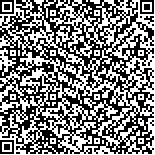本文已被:浏览 1088次 下载 587次
Received:June 02, 2019 Published Online:September 20, 2019
Received:June 02, 2019 Published Online:September 20, 2019
中文摘要: 目的探讨使用EDDA软件设计三维气管血管成像导航单孔胸腔镜联合吲哚菁绿荧光法在解剖性肺段切除术中处理段间交界面,并与目前临床较常用的改良膨胀萎陷法相比较,评价其可行性与优势。方法回顾性分析2018年4月至2019年5月在南京胸科医院胸外科进行荧光法单孔胸腔镜解剖性肺段切除术100例患者(荧光法组)的临床资料,其中男性43例,女性57例,年龄23~78岁;另选取同期行改良膨胀萎陷法单孔胸腔镜解剖性肺段切除术患者100例,作为改良膨胀萎陷法组,其中男性48例,女性52例,年龄38~76岁。术前将所有患者的CT扫描数据导入三维智能交互式定性和定量分析(IQQA-3D)图像分析系统,对结节位置进行识别,并对支气管、动脉、静脉等肺部结构进行三维重建,模拟肺段切除所涉及的靶段支气管、动脉和静脉,并确定保留的段间静脉及虚拟的段间交界面。荧光法组患者术中离断靶段肺血管和支气管后,外周静脉注射吲哚菁绿,随后打开PINPOINT荧光胸腔镜的荧光模式,显示明显段间交界面后用电凝烧灼标记。改良膨胀萎陷法组则在精准离断靶段结构后,重新使全肺完全复张,而后恢复健侧单肺通气,随着时间的推移形成一清晰的分界线并予以电凝烧灼标记。记录两组患者的临床资料,对比分析早期临床结果。结果荧光法组除6例右上肺尖段的交界面相对较模糊外,94%(94/100)均可显示清晰的段间交界面,持续时间(179.75±48.81)s,足以完成交界面的标记;与改良膨胀萎陷法组相比,段间交界面清晰出现时间明显提早[(23.59±4.47)s vs (1 026.80±318.34)s,P<0.01],手术时间缩短[(89.28±31.57)min vs (112.80±32.96) min,P<0.01];两组切缘宽度比较无统计学差异[(2.53±0.52)cm vs (2.44±0.48)cm,P=0.237],均符合≥2 cm的肿瘤学要求;两组术中出血量、术后胸管引流时间、术后住院时间、并发症发生率亦无统计学差异(P>0.05),且均无术后30 d死亡,荧光法组无吲哚菁绿注射相关并发症。结论荧光法除右上肺尖段交界面显示模糊外,所有肺段的交界面均可以快速、准确、清晰地显示,可为单孔胸腔镜解剖性肺段切除术提供安全可靠的技术保障,相比改良膨胀萎陷法可以达到同样的肿瘤学要求,并明显缩短手术时间,更符合快速康复理念要求,有一定的临床应用价值。
Abstract:Objective To investigate the feasibility and advantages of uniportal thoracoscopy and indocyanine green combined with using EDDA to design a 3D tracheal angiography navigation for identification of intersegmental plane in pulmonary segmentectomy,and to compare with the modified inflation-deflation which is commonly used in clinic. Methods The clinical data of 100 patients who received pulmonary segmentectomy by fluorescence (indocyanine green) and uniportal thoracoscopy from April 2018 to May 2015 in Nanjing Chest Hospital were retrospectively analyzed (fluorescence group,43 males and 57 females,aging from 23 to 78).And a total of 100 patients who received pulmonary segmentectomy by modified inflation-deflation at the same period were selected as modified inflation-deflation group (48 males and 52 females,aging from 38 to 76).Preoperative CT scan data of all patients were imported into the three-dimensional intelligent interactive qualitative and quantitative image analysis system (IQQA-3D) to identify the location of nodules,and 3D reconstruction of pulmonary structures such as bronchi,arteries and veins was carried out to simulate the target segments of bronchi,arteries and veins involved in segmentectomy,and to determine their retention.The intersegmental vein and virtual intersegmental interface.In the fluorescence group,indocyanine green was injected into peripheral vein after the target pulmonary vessels and bronchus were cut off during the operation,and then the fluorescence mode of PINPOINT fluorescence thoracoscopy was opened to show the obvious intersection interface and marked by electrocoagulation.In the modified inflation-deflation group,after precisely breaking off the target segment structure,the whole lung was completely reopened,and then the unilateral ventilation was restored.With the passage of time,a clear demarcation line was formed and marked by electrocoagulation and cauterization.The clinical data of the two groups were recorded and the early clinical results were compared and analyzed. Results Except for the relatively blurred interface of the right upper apical segment of the lung in 6 cases,94% (94/100) of the fluorescence group showed clear intersegmental interface with a duration of (179.75±48.81) s,which was sufficient to complete the marking of the interface.Compared with the modified inflation-deflation group,the fluorescence group showed shorter display time[(23.59±4.47)s vs (1 026.80±318.34)s,P<0.01] and shorter operation time[(89.28±31.57)min vs (112.80±32.96) min,P<0.01].There was no significant difference in the width of the incision margin between the two groups[(2.53±0.52)cm vs (2.44±0.48)cm,P=0.237],which all met the oncological requirement of ≥2 cm.There were no significant differences in bleeding volume,drainage time,hospitalization time and complication rate between the two groups (all P>0.05),and no death occurred 30 days after operation.There were no complications related to indocyanine green injection in fluorescence group. Conclusion Except for the blurred display of the right upper apical segment,the interface of all segments can be displayed quickly,accurately and clearly by fluorescence method,which can provide a safe and reliable technical guarantee for uniprotal thoracoscopic pulmonary segmentectomy.Compared with the modified inflation-deflation,it can meet the same oncological requirements and significantly shorten the operation time.It is more in line with the requirements of the concept of rapid rehabilitation and has certain clinical application value.
keywords: Pulmonary segmentectomy Intersegmental plane Uniportal thoracoscopy Fluorescence methods, indocyanine green Modified inflation-deflation
文章编号: 中图分类号: 文献标志码:A
基金项目:
引用文本:
